Introduction
Embarking on a hiking adventure in the United Kingdom is a gateway to a world of diverse landscapes, captivating trails, and breathtaking views.
From the rugged Scottish Highlands to the desolate moors of Devon, the UK offers an array of hiking experiences for enthusiasts of all levels.
However, a successful hiking expedition goes beyond the joy of exploration; it requires planning, proper gear, safety awareness, and an understanding of the unique features of each destination.
- Section 1: Planning Your Hike
- Section 2: Essential Gear
- Section 3: Safety Precautions
- Section 4: Top Hiking Destinations
- Section 5: Environmental Considerations
- Section 6: Hiking Etiquette
- Section 7: Health and Fitness
- Section 8: Hiking with Pets and Children
- Section 9: Accommodations and Amenities
- Section 10: Post-Hike Recovery
In this comprehensive guide, we will delve into the essential aspects of planning, gear selection, safety precautions, top hiking destinations, environmental considerations, hiking etiquette, health and fitness preparation, and accommodation. Whether you’re a seasoned hiker or venturing into the trails for the first time, this guide aims to equip you with the knowledge needed for a rewarding and memorable hiking experience in the UK.

Section 1: Planning Your Hike
Hiking in the UK offers a myriad of landscapes and trails, each with its unique charm. However, a successful hiking experience begins with careful planning. Whether you’re a seasoned hiker or a novice, taking the time to plan your adventure ensures a safer and more enjoyable journey.
1.1 Choose the Right Time and Season
Before lacing up your hiking boots, consider the timing of your hike. The UK experiences varied weather throughout the year, influencing trail conditions and visibility. Spring and summer are popular for lush landscapes, while autumn provides stunning foliage. Winter hikes offer a different experience but require extra preparation for colder temperatures and potential snow.
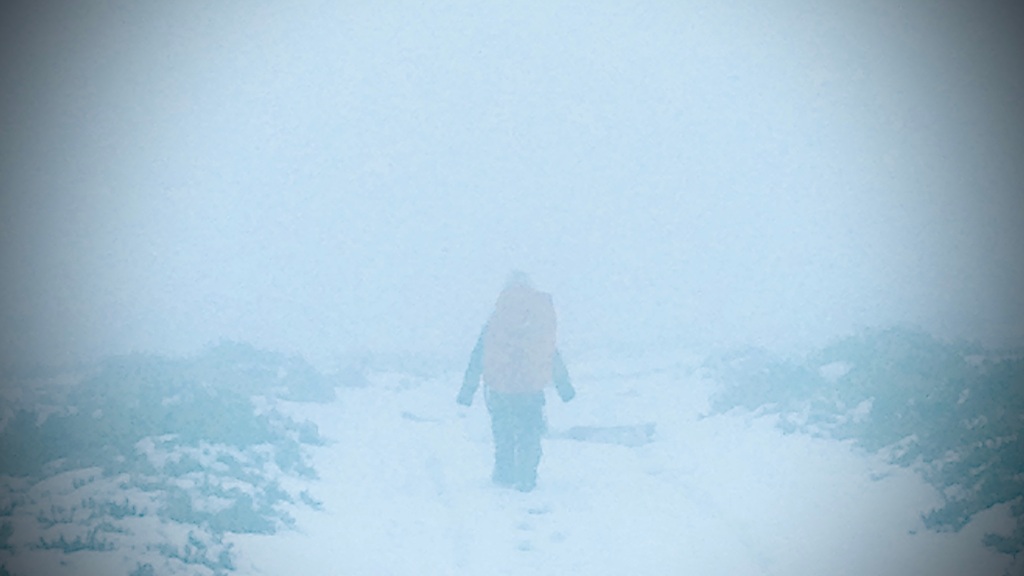
1.2 Selecting Suitable Trails
The UK boasts loads of hiking trails catering to all skill levels. Beginners might find joy in scenic strolls through nature reserves, while experienced hikers can tackle challenging routes in mountainous regions as well as our network of long distance paths and National Trails. Websites and apps like Ordnance Survey and AllTrails are great resources for discovering trails, providing details on difficulty, distance, and elevation gain.
1.3 Research Trail Difficulty Levels
Understanding the difficulty of a trail is crucial for an enjoyable hike. Trails are often categorised from easy to strenuous, with corresponding symbols or grades. Consider your fitness level and hiking experience when choosing a trail. If you’re unsure, opt for a moderate trail initially and gradually progress to more challenging routes as your confidence and skills grow.
Our first long distance hike was The West Highland Way. As a popular trail its well maintained and serviced with lots of opportunity for rest stops. resupplies and easy options for wildcamping. Our children were aged 5, 7 and 9 and were able to complete the trail…albeit over 10 days rather than 6
1.4 Check Trail Conditions and Regulations
Before heading out, check for any trail closures, maintenance, or weather-related advisories. Many hiking areas have websites or visitor centres where you can access up-to-date information. Familiarise yourself with potential trail diversions and remember there may be seasonal restrictions especially around lambing season when less leeway may be given by landowners and farmers. Respecting these different uses of the land ensures a positive experience for you and helps preserve access to these areas for future generations.
1.5 Plan Your Itinerary
Create a detailed itinerary for your hike, including start and end times, estimated duration, and planned rest stops. Share your itinerary with someone responsible who knows your plans and expected return time. This precaution adds a layer of safety, especially if you’re exploring less-traveled paths.
In our experience of hiking, mostly with our children, it always pays to allow more time than the guide book says so you can really spend some time on trail…like I said earlier we spent 10 days on the West Highland when most people take 5 or 6. That’s more time on trail for us so we win!!!
Alternatively, remember that the guidebooks give conservative estimations so if your fit and travelling light you can probably travel further and faster in a day than the assumed 3 mph
In the next section, we’ll delve into the gear essentials you’ll need to make your hiking experience comfortable and safe. So, whether you’re a solo adventurer or planning a group hike, meticulous planning sets the foundation for an unforgettable trip through some of the UK’s breathtaking landscapes.

Section 2: Essential Gear
Embarking on a hiking journey in the UK requires more than just enthusiasm – having the right gear is paramount for a comfortable and safe experience. Whether you’re a weekend hiker or planning a more extended trek, investing in quality equipment enhances your overall enjoyment and ensures you’re prepared for the unexpected.
If you can afford to, buy the best kit you can and it should look after you. If you can’t afford the most durable gear then there’s second hand options like ebay or if you’re heading out for the first time and unsure that hiking is for you, you can always borrow gear from friends.
There’s plenty of options to purchase sustainably and it pays to research the green options. Some companies, like Patagonia, have a proven track record of sustainability and support many projects that protect and promote outdoor recreation.
2.1 Footwear
The foundation of any successful hike lies in the footwear you choose. Traditionally we’ve been told to “opt for sturdy, comfortable hiking boots that provide ankle support and have a grippy sole for varied terrains” and is generally taken to mean a traditional leather hiking boot.
Over the years as the ultralight long distance hiking movement has influenced the markets and technology and materials improved, trail running shoes have become more and more popular.
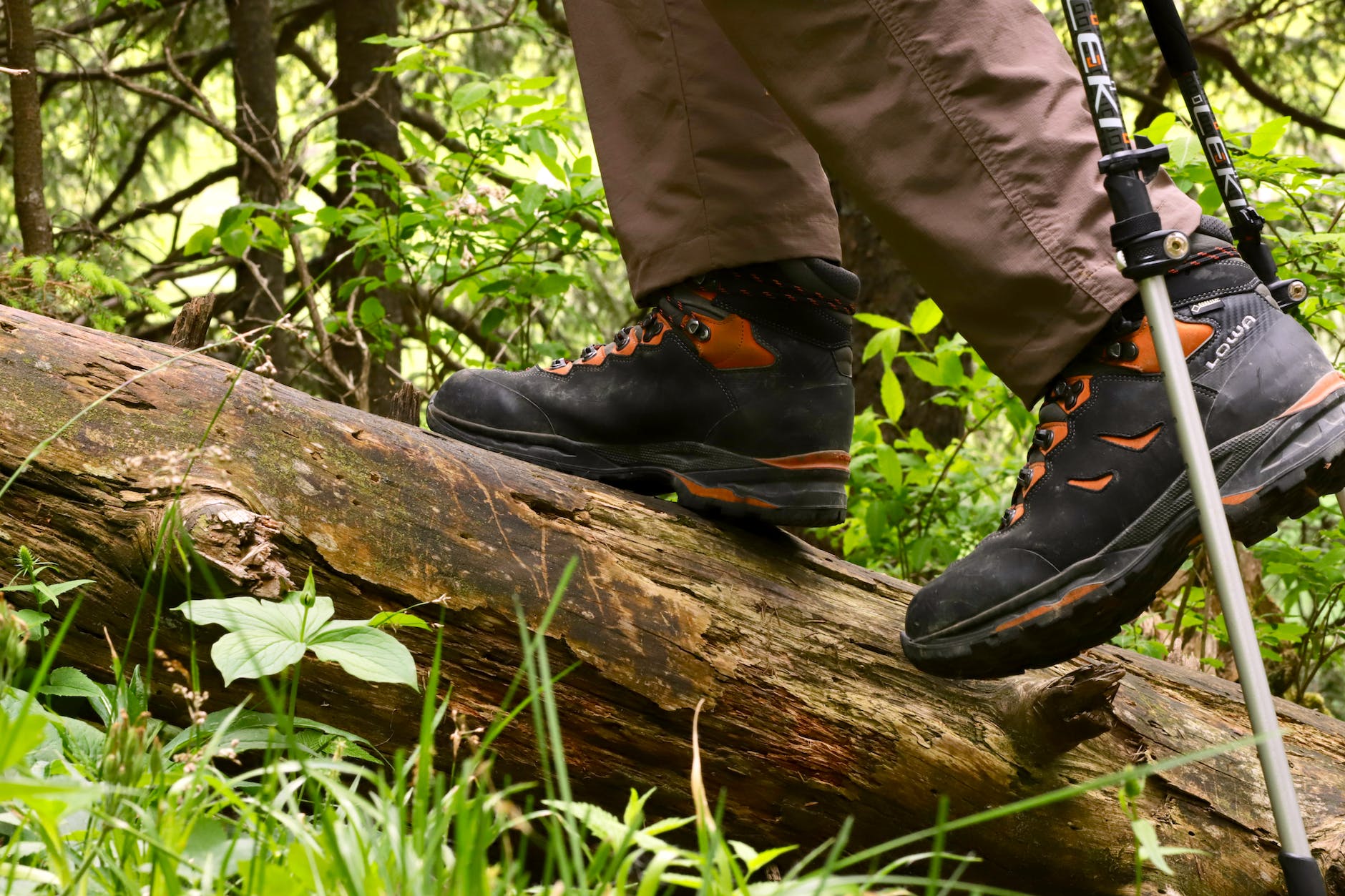
I have always hiked in trail runners and I use a gore-tex waterproof shoe in the winter and a non waterproof, more breathable shoe in the summer. Personally I’ve never had any problems hiking in these but it’s important to note that I rarely hike off trail or in very technical situations but whichever you choose, ensure they are well-fitted and broken in before hitting the trail to prevent blisters and discomfort.
2.2 Clothing
Dress in layers to accommodate the ever-changing UK weather. A moisture-wicking base layer helps regulate body temperature, while a waterproof and windproof outer layer shields you from the elements. Pack a hat, gloves, and a spare set of clothes in case conditions take an unexpected turn.
2.3 Backpack
A well-designed backpack is essential for carrying your gear and provisions. Choose one with adjustable straps for a customised fit, and multiple compartments to keep your items organised. Consider the capacity based on the duration of your hike – a daypack for shorter excursions and a larger backpack for overnight trips.
A Note from Personal Experience – Buy your backpack last! It’s easier to buy a pack to fit your gear than try to fit all your kit into a too small bag.
Also… Remember – You don’t need to fill the bag up entirely. Some space in your rucksack will come in handy at some point, I promise.
2.4 Navigation Tools
While many trails are well-marked, having navigation tools is crucial for off-the-beaten-path adventures. Carry a detailed map of your route, a compass, and consider a GPS device or smartphone app with offline maps for added security. Familiarise yourself with the trail markings and symbols used in the region you’re exploring and make sure you know how to use all your navigation tools
2.5 Hydration and Nutrition
Staying hydrated is paramount during any hike. Carry an adequate supply of water and consider a hydration system for convenient access. Pack energy-rich snacks like trail mix, energy bars, and fruits to keep your energy levels up. Be mindful of waste; carry a reusable water bottle and pack out all your trash.
2.6 First Aid Kit
Accidents happen, so having a basic first aid kit is non-negotiable. Include bandages, pain relievers, blister treatment, and any personal medications you may need. Knowing how to use the items in your kit is equally important, so familiarise yourself with basic first aid procedures.
2.7 Lighting and Signalling Devices
Even if you plan a daytime hike, unexpected delays can lead to low-light conditions. Carry a reliable headlamp or flashlight with extra batteries. A whistle is a lightweight but effective signalling device in case you need to attract attention in an emergency. Make sure you know how to contact the emergency services in whichever country you are in.
Investing in high-quality gear not only enhances your hiking experience but also contributes to your safety on the trail. Obviously if your out for multiple days you’ll need extra equipment for camping which is covered in this post “What Gear Do I Need For Wildcamping”
what gear do i need to go wild camping
A brief look at some of the gear and equipment you need to get started wild camping.
In the next section, we’ll explore crucial safety precautions to ensure your adventure in the UK’s diverse landscapes remains enjoyable and risk-free.

Section 3: Safety Precautions
Hiking in the UK’s picturesque landscapes is a thrilling adventure, but prioritising safety is paramount to ensure a positive and incident-free experience. From understanding the local weather patterns to being prepared for emergencies, taking the right safety precautions adds an extra layer of security to your hiking expedition.
3.1 Weather Awareness
The UK’s weather is famously unpredictable, so staying informed is key. Check the forecast before your hike and be prepared for sudden changes. Pack waterproof layers even on sunny days and be mindful of the potential for fog in higher elevations. Familiarise yourself with the signs of hypothermia and heat-related illnesses.
3.2 Emergency Preparedness
Prepare for the unexpected by carrying essential emergency items. A fully charged mobile phone with emergency contacts saved is crucial. Consider a portable power bank to ensure your phone stays charged throughout your hike. Know the emergency services number (999 in the UK) and have a plan for communicating your location if needed.
The smartphone App “What 3 Words” is an easy way to convey your location to emergency services but obviously requires battery on your device. You can also use a head torch or a whistle to attract attention in an emergency situation
3.3 Navigation Skills
While modern technology provides convenient navigation tools, basic map and compass skills are invaluable. Learn how to read a map, understand contour lines, and use a compass. These skills become especially important in areas with limited or no cellular signal. Trusting your ability to navigate adds a level of self-reliance to your hiking experience.
3.4 Tell Someone Your Plans
Before setting out on your hike, inform someone reliable about your plans. Share your itinerary, including the trail you’ll be taking, expected start and end times, and any planned rest stops. Check-in with them upon your return to let them know you’re safe. This simple precaution ensures that someone is aware of your whereabouts in case of an emergency.
3.5 Carry Adequate Supplies
Aside from essential gear, pack enough supplies to sustain yourself in case your hike takes longer than expected. Extra food, water, and a thermal blanket can be crucial in unforeseen situations. Consider the duration of your hike and prepare accordingly, especially if you’re exploring more remote or challenging trails.
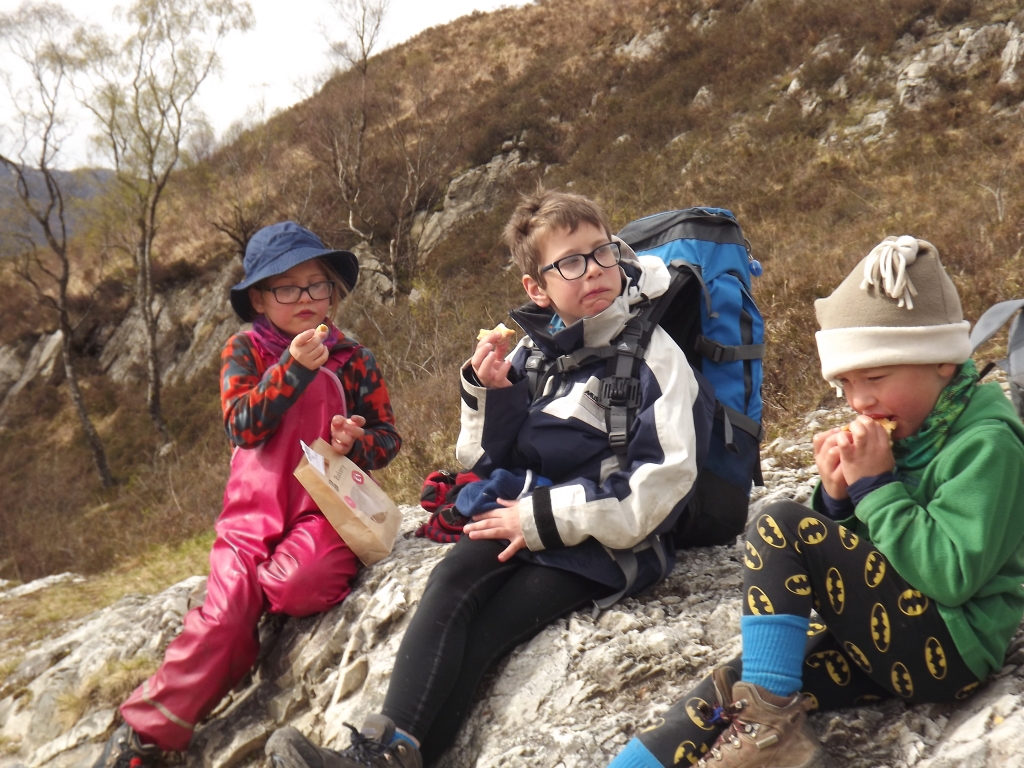
3.6 Trail Etiquette and Respect for Wildlife
Respect for nature and fellow hikers is fundamental to a positive hiking experience. Follow trail etiquette, yield to others, and avoid disturbing wildlife. Stay on designated paths to minimise environmental impact, and if you encounter wildlife, observe from a safe distance without interfering with their natural behaviour.
3.7 Group Hiking Safety
If hiking in a group, establish clear communication and a designated meeting point in case members get separated. Ensure everyone is aware of safety procedures and emergency protocols. Additionally, consider the pace and fitness levels of all group members when selecting a trail.
By incorporating these safety precautions into your hiking routine, you’ll not only enhance your own safety but also contribute to the preservation of the beautiful landscapes you explore. In the upcoming sections, we’ll delve into the top hiking destinations in the UK and provide insights into the unique features of each location.
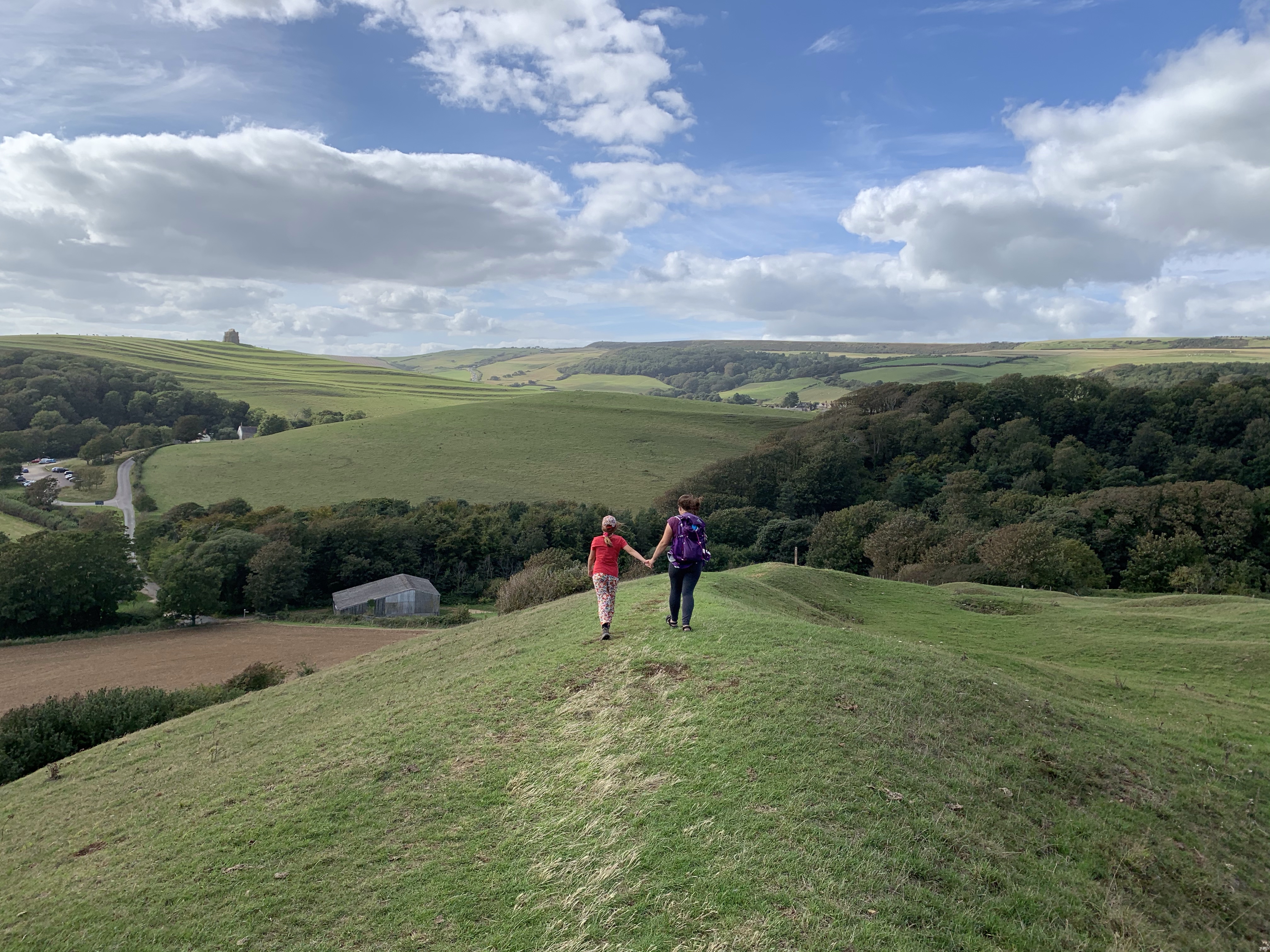
Section 4: Top Hiking Destinations
The United Kingdom is a treasure trove for hiking enthusiasts, offering a diverse range of landscapes and trails. From the rugged beauty of the Scottish Highlands to the serene Lake District and the iconic peaks of Snowdonia, each region presents a unique hiking experience. Explore these top destinations to witness the breathtaking beauty that the UK has to offer.
4.1 The Lake District
Nestled in northwest England, the Lake District is a haven for hikers seeking picturesque landscapes. Wind through charming valleys, ascend rolling hills, and discover the shimmering lakes that give the region its name. Notable trails include the challenging Scafell Pike, England’s highest peak, and the more leisurely Cat Bells, offering stunning panoramic views.
4.2 Scottish Highlands
For those craving rugged terrain and dramatic vistas, the Scottish Highlands beckon. The West Highland Way, a long-distance trail, takes you through diverse landscapes, from lochs and glens to moors and mountains. Ben Nevis, the highest peak in the UK, offers a challenging ascent rewarded with unparalleled views of the Highlands.
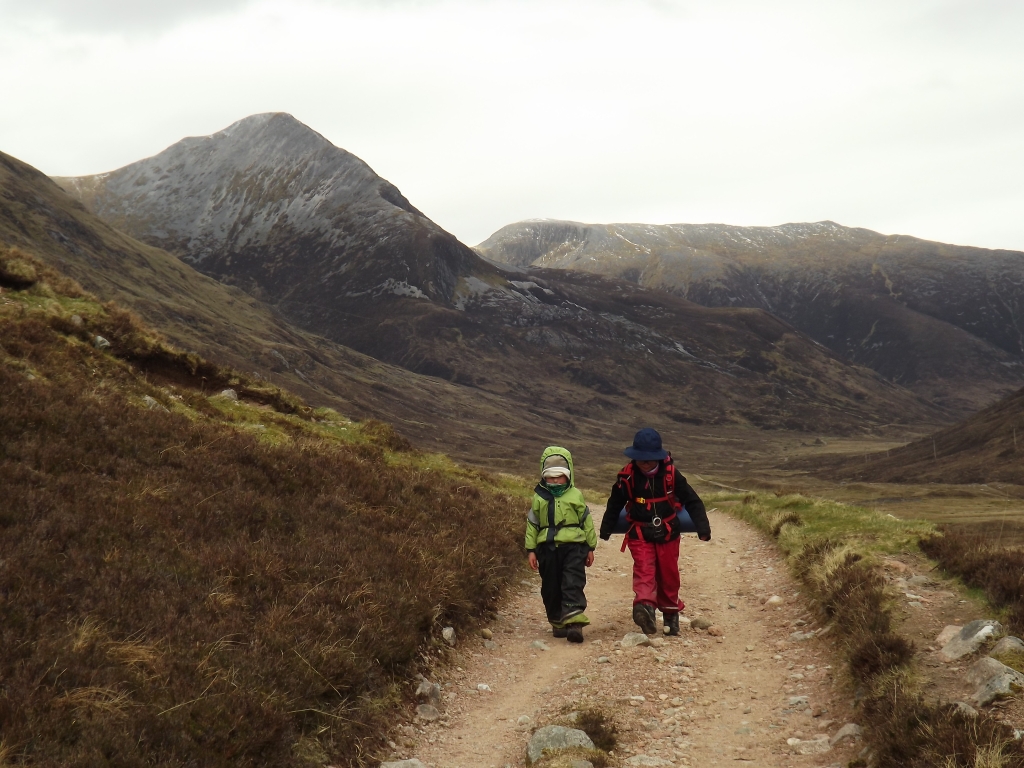
4.3 Snowdonia National Park
Wales boasts its own share of captivating landscapes in Snowdonia. Mount Snowdon, the highest peak in Wales, attracts hikers with its diverse trails, including the popular Snowdon Ranger Path and the more challenging Crib Goch route. Explore serene lakes, ancient castles, and lush valleys as you traverse this picturesque national park.
4.4 Peak District National Park
Situated at the heart of England, the Peak District National Park combines natural beauty with historical richness. The Pennine Way, one of the UK’s most famous trails, passes through the Peak District, offering a mix of challenging ascents and tranquil moorland walks. Visit the iconic Kinder Scout plateau for a unique hiking experience.
4.5 The South West Coast Path
For coastal hiking enthusiasts, the South West Coast Path delivers stunning views along the rugged shores of Cornwall, Devon, and beyond. The path covers over 600 miles, showcasing dramatic cliffs, sandy coves, and charming seaside villages. Choose sections based on your preference, whether it’s the vibrant landscapes of Cornwall or the Jurassic Coast in Dorset.
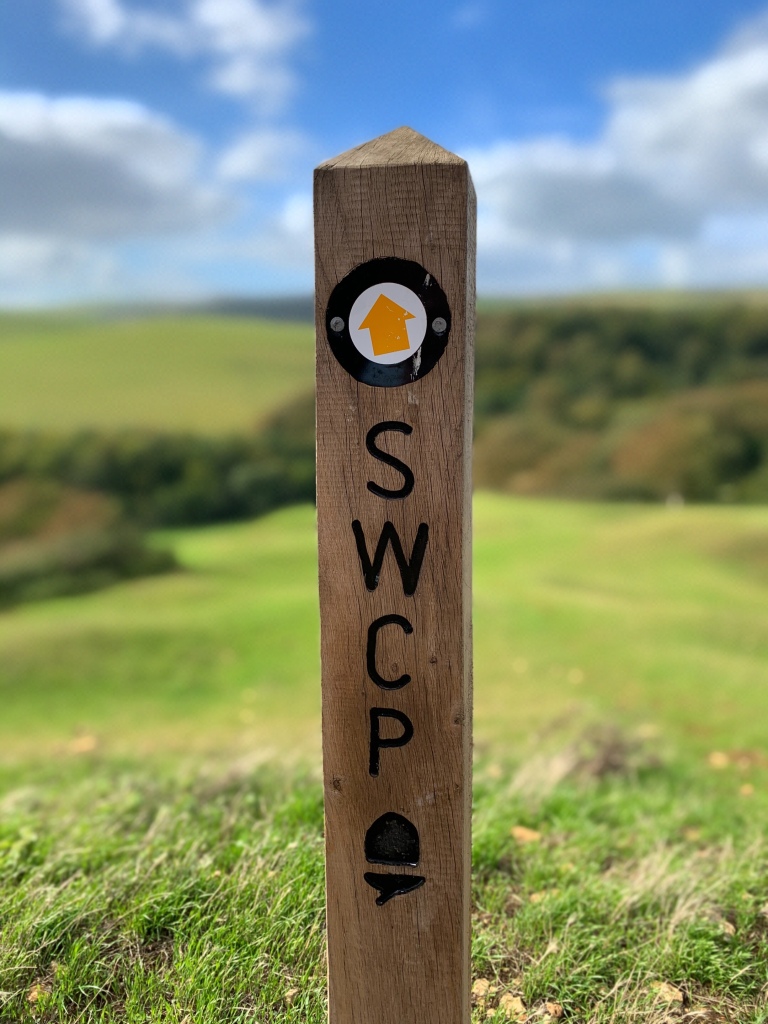
4.6 Cairngorms National Park
Scotland’s largest national park, Cairngorms, is a paradise for nature lovers. Hike through ancient Caledonian forests, traverse high plateaus, and marvel at the pristine lochs. The Lairig Ghru trail is a challenging yet rewarding option, taking you through the heart of the park with breathtaking mountain scenery.
4.7 The Pennine Way
Spanning the backbone of England, the Pennine Way is a long-distance trail offering a diverse range of landscapes. From the heather-covered moorlands of the South Pennines to the rugged terrain of the North Pennines, this trail is a journey through the country’s scenic heartland.
These top hiking destinations in the UK are just a glimpse of the country’s rich and varied landscapes. Whether you seek challenging ascents, tranquil lakeside strolls, or coastal adventures, the United Kingdom has a trail for every hiker’s preference. In the next section, we’ll explore the environmental considerations crucial for preserving these natural wonders.

Section 5: Environmental Considerations
Hiking in the UK is not just about personal exploration; it’s a shared experience with nature. Responsible hikers understand the importance of leaving minimal impact on the environment and wildlife. By following Leave No Trace principles and adopting eco-friendly practices, you contribute to the preservation of these beautiful landscapes for future generations.
5.1 Leave No Trace Principles
Adhering to Leave No Trace principles is fundamental to responsible hiking. “Pack it in, pack it out” should be your mantra, meaning whatever you carry into a trail should leave with you. Dispose of waste properly, respect wildlife by observing from a distance, and stay on designated paths to prevent soil erosion.
5.2 Stay on Designated Trails
Trails are designed to guide hikers through the landscape while minimizing environmental impact. Straying off designated paths can damage fragile ecosystems, disturb wildlife, and contribute to erosion. Stick to established trails, even if it means navigating mud or puddles, to protect the natural surroundings.
5.3 Respect Wildlife and Flora
Observe wildlife from a distance, using binoculars or a camera to capture the moment without disrupting their natural behavior. Avoid feeding animals, as it can alter their natural diet and behavior. Similarly, refrain from picking flowers or disturbing vegetation, as it plays a vital role in the ecosystem.
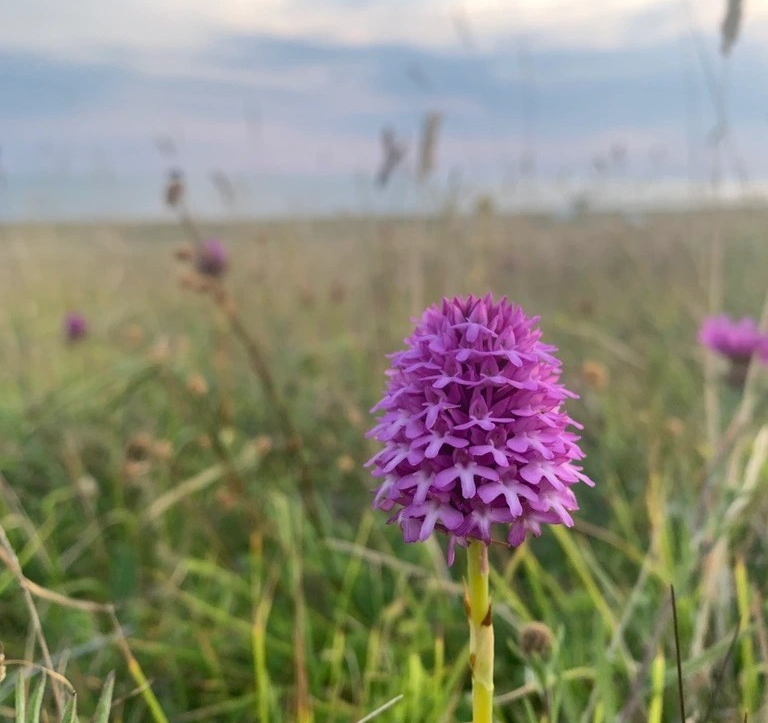
5.4 Minimise Noise Pollution
The serene landscapes of the UK are best enjoyed in peace and quiet. Keep noise to a minimum to avoid disturbing wildlife and fellow hikers. Enjoy the sounds of nature, whether it’s the rustle of leaves or the call of birds, and be considerate of others seeking a tranquil experience.
5.5 Proper Waste Disposal
Packaging, food scraps, and other waste have no place in the natural environment. Carry a small bag for collecting your trash and dispose of it properly when you reach designated waste bins. If bins are not available, carry your waste with you until you can properly dispose of it.
5.6 Considerate Camping Practices
If your hike involves camping, choose established campsites whenever possible. Follow Leave No Trace camping principles by minimising your impact on the surroundings. Avoid creating new fire pits and instead use existing ones, or carry a portable stove for cooking. Read our 7 Golden Rules for Wildcamping
7 golden rules for wild camping in the uk
When we venture out for a wild camp in the UK there are a few “golden rules” we like to follow. They help to keep us safe, protect our natural surroundings and lessen our impact on future visitors and land users
5.7 Support Conservation Efforts
Consider supporting local conservation efforts or participating in organized clean-up events. Many hiking destinations have volunteer programs aimed at maintaining trails and preserving the natural environment. Contributing your time or resources helps ensure that these areas remain accessible and pristine for years to come.
By embracing these environmental considerations, you not only leave a positive mark on the landscapes you explore but also contribute to the sustainability of outdoor recreation. In the upcoming sections, we’ll delve into hiking etiquette and essential health and fitness considerations for an enjoyable and fulfilling hiking experience in the UK.

Section 6: Hiking Etiquette
Respecting both nature and fellow hikers is crucial for fostering a positive and enjoyable hiking experience. Hiking etiquette ensures that everyone on the trail can appreciate the beauty of the landscape without disruption. By following a few simple guidelines, you contribute to a harmonious environment for all outdoor enthusiasts.
6.1 Yielding to Others
Practice courtesy by yielding the trail to others, particularly when encountering uphill hikers. Uphill travellers often have the right of way, as it can be more challenging for them to regain momentum after stopping. Step aside, give a friendly greeting, and allow them to pass comfortably.
6.2 Passing Etiquette
If you’re overtaking other hikers, announce your presence with a friendly “hello” or “excuse me.” Slow down and wait for a suitable moment to pass without causing disruption. Be mindful of the trail width, and if you have a larger group, consider single-file walking to make passing easier for oncoming hikers.
6.3 Group Size and Spacing
Maintain a reasonable group size to minimize your impact on the trail and surrounding environment. Larger groups can be more challenging for others to pass. If hiking with a group, be mindful of the space you occupy and allow ample room for other trail users.
6.4 Noise Management
Nature enthusiasts often seek the tranquility of the outdoors. Keep noise levels to a minimum to preserve the serene atmosphere. Use headphones for personal music enjoyment, and if hiking with others, engage in conversations at a considerate volume. Be particularly mindful near wildlife habitats.
6.5 Leash Your Pets
If hiking with furry companions, keep them on a leash to ensure the safety of both wildlife and other hikers. Even well-trained dogs can be unpredictable, and wildlife may react defensively. Pack waste bags for pet waste and dispose of them properly in designated bins.
6.6 Respect Trail Regulations
Trail regulations are in place to protect both the environment and hikers. Familiarise yourself with posted rules, such as leash requirements for dogs, restricted access areas around nesting seasons and lambing time, and any specific trail-use guidelines. Adhering to these regulations contributes to a safe and enjoyable experience for everyone.
6.7 Trail Greetings
A simple “hello” or a nod of acknowledgment goes a long way in creating a positive trail atmosphere. Greet fellow hikers with a friendly salutation, and be open to brief conversations. A shared love for the outdoors often creates a sense of camaraderie among hikers.
By embracing hiking etiquette, you actively contribute to a welcoming and enjoyable trail environment. In the next section, we’ll delve into the importance of health and fitness preparation before embarking on a hiking adventure, ensuring you’re physically and mentally ready for the challenges of the UK’s diverse landscapes.
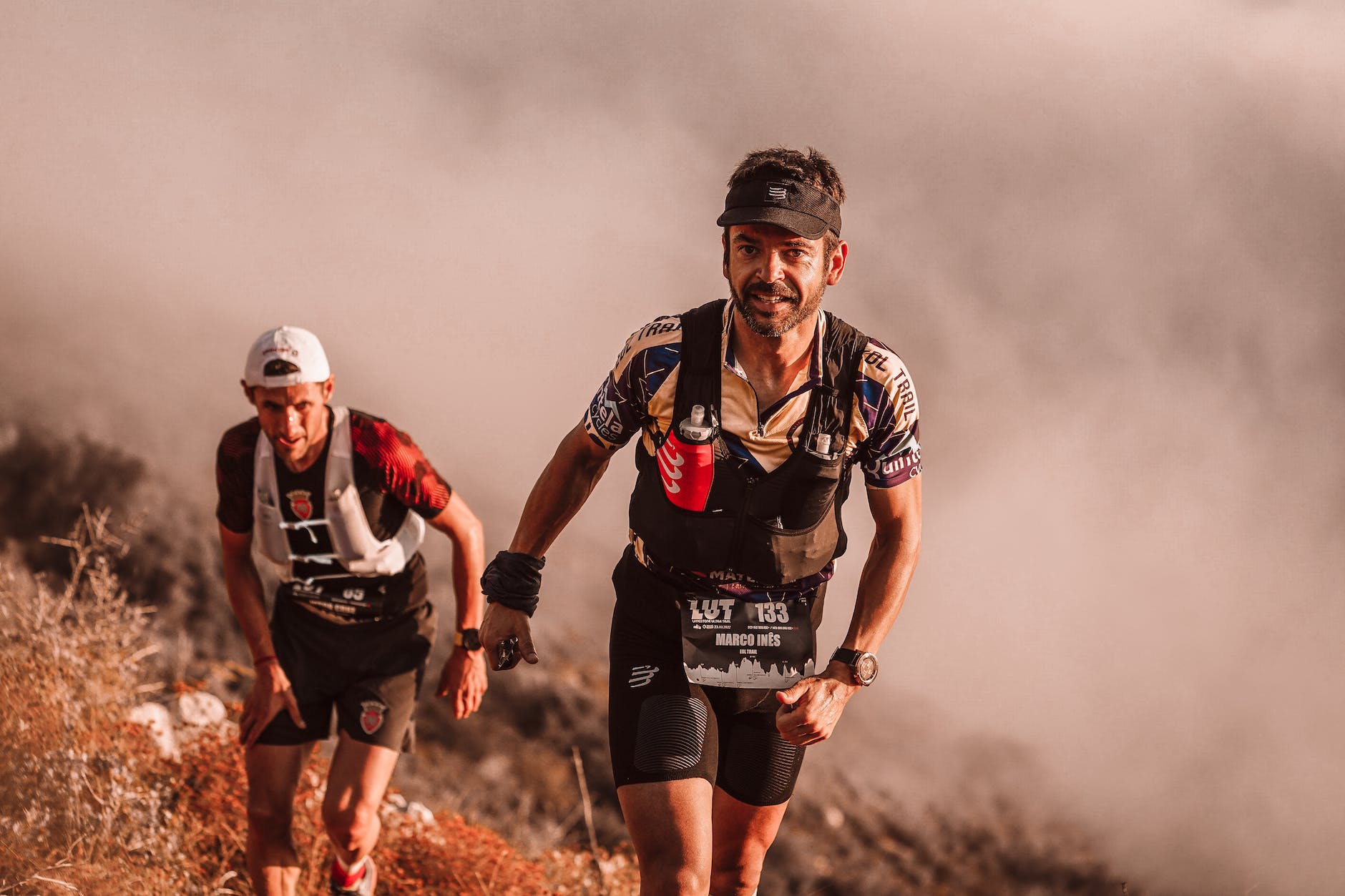
Section 7: Health and Fitness
Preparing your body and mind for a hiking adventure in the UK is essential to fully enjoy the diverse landscapes and challenging trails. Whether you’re planning a leisurely stroll through the countryside or a strenuous ascent to a mountain summit, adequate health and fitness preparation ensure a more comfortable and fulfilling hiking experience.
7.1 Physical Conditioning
Hiking often involves varied terrain and elevation changes, requiring a reasonable level of physical fitness. Incorporate cardiovascular exercises such as walking, jogging, or cycling into your routine to build endurance. Strength training, particularly for your legs, helps prepare muscles for the demands of uneven terrain and uphill climbs.
7.2 Gradual Progression
If you’re new to hiking or increasing the intensity of your hikes, embrace a gradual progression. Start with shorter, less challenging trails and gradually increase distance and difficulty as your fitness improves. This approach allows your body to adapt to the physical demands of hiking, reducing the risk of overuse injuries.
7.3 Flexibility and Mobility Exercises
Enhance your hiking experience by incorporating flexibility and mobility exercises into your routine. Stretching helps improve your range of motion, reducing the likelihood of muscle strains. Focus on major muscle groups, including the legs, hips, and lower back, to maintain flexibility during hikes.
7.4 Cardiovascular Endurance
Hiking often involves sustained periods of moderate aerobic activity. Boost your cardiovascular endurance through activities like brisk walking, cycling, or swimming. Aim for at least 150 minutes of moderate-intensity aerobic exercise per week to enhance your heart and lung capacity.
7.5 Mental Preparedness
Hiking not only challenges your body but also engages your mind. Mental preparedness is crucial for navigating trails, making decisions, and enjoying the journey. Practice mindfulness exercises to stay present and focused during hikes. Develop a positive mindset that embraces the joy of exploration and the satisfaction of overcoming challenges.
While hiking is essentially amazing, sometimes it’s the challenges that give us joy with a large helping of hindsight. At the end of the trail you’ll be glad you made it through 4 days of rain and mud and never ending dampness and it will all add to that sense of achievement.
But don’t be fooled…at those times it can feel just relentlessly hard. Give yourself a break, get off the trail if you want.
Remember It’s not an exercise in suffering.
7.6 Hydration and Nutrition
Proper hydration and nutrition play a vital role in maintaining energy levels during a hike. Stay well-hydrated by carrying an adequate supply of water and sipping regularly, especially on longer treks. Pack nutritious snacks to replenish energy, including a mix of carbohydrates, proteins, and healthy fats.
7.7 Know Your Limits
Understanding your fitness level and knowing your limits is crucial for a safe hiking experience. Be realistic about the challenges you can undertake and choose trails that align with your abilities. Listen to your body during hikes, take breaks when needed, and don’t hesitate to turn back if conditions or your well-being dictate.
If you’re hiking in a group be mindful of the capabilities of your friends, remember to consider the needs of all members especially those less able or experienced.
A lot of our hiking has been done with the children so while a 15 – 20 mile day for me is fine, that mileage was rarely achievable with a 5 year old. Now we are all older it’s me that’s struggling to keep up!
7.8 Consult with a Healthcare Professional
Before embarking on a new fitness regimen or tackling challenging hikes, consult with a healthcare professional, especially if you have pre-existing health conditions. They can provide personalised advice and ensure that you’re physically prepared for the demands of hiking.
By prioritising your health and fitness, you set the stage for a more enjoyable and rewarding hiking experience in the UK. In the upcoming sections, we’ll explore considerations for hiking with pets and children, as well as accommodations and amenities available for hikers in various destinations.
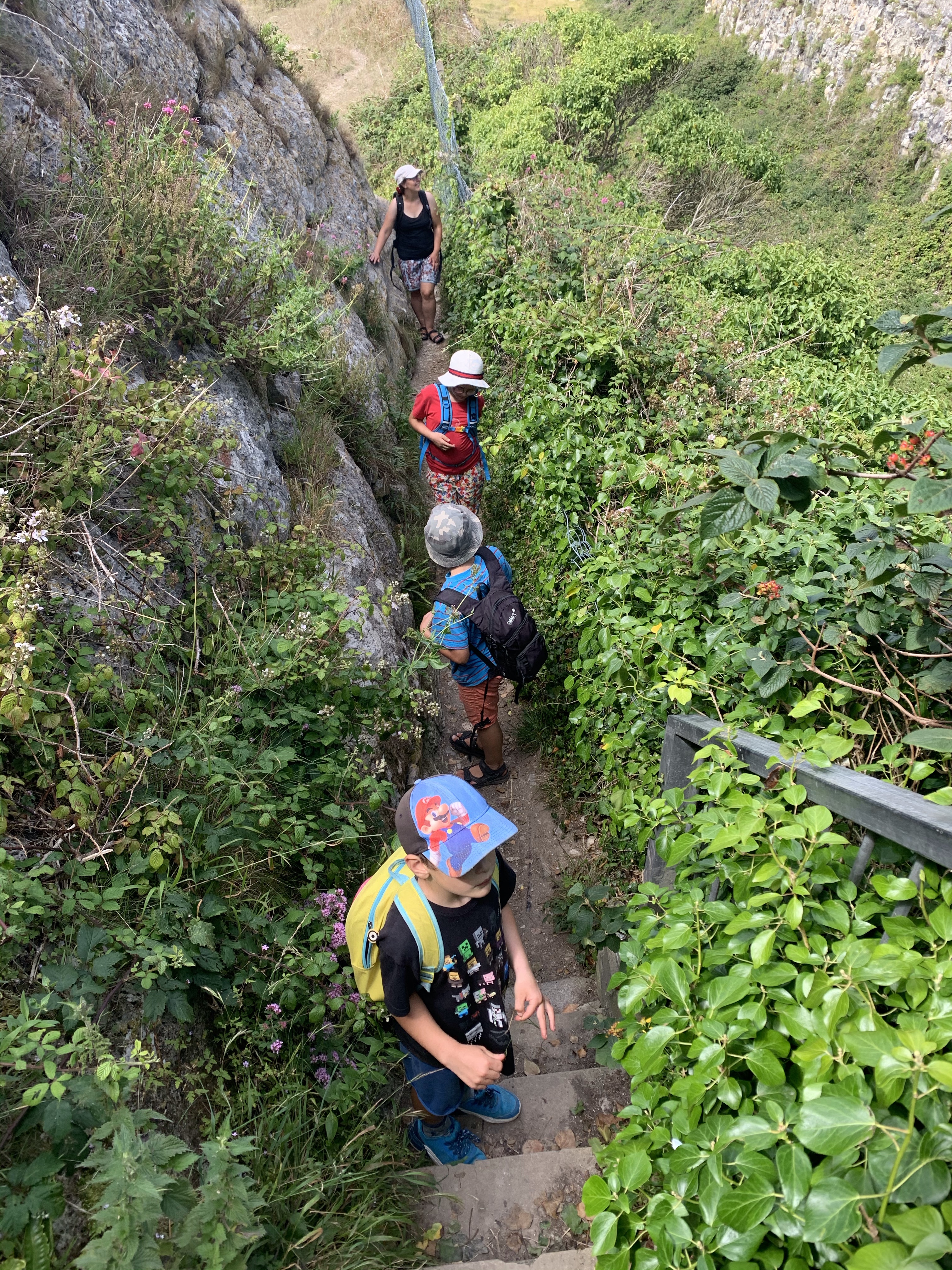
Section 8: Hiking with Pets and Children
Hiking is a wonderful family activity that can be enjoyed by all, including furry friends and little adventurers. However, hiking with pets and children requires additional considerations to ensure everyone’s safety and enjoyment. By taking a few precautions and planning accordingly, you can create memorable outdoor experiences for the whole family.
8.1 Hiking with Pets
If you’re bringing your canine companion along for a hike, consider the following:
- Leash Regulations: Many hiking areas have leash regulations to protect wildlife, livestock and other hikers. Always check and adhere to local rules.
- Trail Compatibility: Ensure the trail is suitable for pets, considering factors like trail difficulty and terrain.
- Water and Rest: Carry sufficient water for your pet, and plan for rest breaks. Dogs, like humans, can get tired, especially on longer hikes.
8.2 Hiking with Children
When hiking with children, safety and engagement are key:
- Appropriate Trails: Choose family-friendly trails with manageable distances and moderate difficulty levels. Ensure the trail is suitable for the age and capabilities of your children.
- Gear for Kids: Equip children with proper footwear and clothing. Consider a child carrier for younger ones or allow older children to carry a small backpack with their essentials.
- Education and Exploration: Educate children about the outdoors and the importance of respecting nature. Encourage exploration but set clear boundaries for their safety.
Check out our guide to hiking with kids
How To Go Hiking With Kids
In our experience of climbing mountains and hiking long trails with children as young as 4, it’s us, the parents who find it hardest. Are they big enough? How far can they walk? Where can I take my kids hiking?
I’ll try to answer some of those worries here.
8.3 Safety Considerations for Both
- First Aid Kit: Carry a family-friendly first aid kit that includes essentials for both adults and children, as well as any necessary medications for family members.
- Communication Plan: Establish a communication plan, especially in areas with limited cell reception. Make sure everyone knows what to do in case of separation or emergencies.
- Weather Awareness: Be mindful of weather conditions, especially if hiking with children or pets. Dress appropriately and be prepared for changing weather.
8.4 Trail Amenities and Pet-Friendly Accommodations
Research trail amenities that cater to families with pets and children. Some trails may have designated play areas, pet-friendly zones, or accommodations with family-friendly facilities. Check in advance and plan your hike accordingly to maximize comfort and enjoyment for everyone.
Hiking with pets and children adds an extra layer of joy to your outdoor adventures. By prioritising safety, proper planning, and embracing the unique considerations that come with family hikes, you’ll create lasting memories for everyone involved. In the following section, we’ll explore accommodations and amenities available for hikers in various destinations, ensuring a comfortable and well-rounded hiking experience in the UK.

Section 9: Accommodations and Amenities
Whether you’re embarking on a day hike or planning a multi-day trek, knowing about accommodations and available amenities can significantly enhance your overall hiking experience. From charming bed-and-breakfasts to campsites with essential facilities, the UK offers a range of options for hikers seeking a comfortable and convenient stay.
9.1 Nearby Accommodations
Before your hiking adventure, research nearby accommodations to ensure a restful night’s sleep. Options vary from cozy guesthouses and traditional inns to hotels and holiday cottages. Booking accommodations in advance provides peace of mind, especially during peak seasons when popular hiking destinations can be bustling.
9.2 Camping Options
For those seeking a closer connection with nature, camping is a popular choice. Many hiking destinations in the UK have designated campsites with basic facilities like toilets and water sources. Ensure you follow Leave No Trace principles, and if wild camping is allowed, be sure to obtain any necessary permits and adhere to local regulations.
9.3 Amenities at Hiking Destinations
Explore the amenities available at your chosen hiking destination. Some popular trails have visitor centers offering maps, information, and sometimes even guided tours. Additionally, certain trails provide picnic areas, cafes, or facilities for purchasing snacks and refreshments. Knowing what’s available can help you plan your provisions accordingly.
9.4 Hiker-Friendly Services
Look for accommodations and services specifically catering to hikers. Some establishments offer hiker-friendly amenities like gear storage, drying rooms for wet clothing, and packed lunches. These services can make a significant difference in ensuring your comfort and convenience during and after your hike.
9.5 Accessibility Considerations
Consider the accessibility of accommodations, especially if you have specific requirements. Some trails may have lodging options with wheelchair accessibility, while others may have family-friendly facilities. Check reviews or contact accommodations directly to inquire about their accessibility features.
9.6 Booking in Advance
Popular hiking destinations can experience high demand for accommodations, particularly during peak seasons. To secure your preferred lodging and avoid disappointment, it’s advisable to book in advance. This is especially important for multi-day hikes where securing accommodation along the trail is crucial.
9.7 Local Services and Stores
Check for nearby services and stores that can cater to your needs. Having access to local stores allows you to replenish supplies, and knowing the location of services like medical facilities adds an extra layer of safety to your hiking plans.
By considering accommodations and amenities in advance, you’ll ensure a more relaxed and enjoyable hiking experience. Whether you prefer the comfort of a cozy inn or the simplicity of camping under the stars, the diverse offerings across the UK cater to various preferences and needs. In the final section, we’ll explore post-hike recovery, emphasising the importance of taking care of your body and mind after completing a rewarding hike.

Section 10: Post-Hike Recovery
Completing a fulfilling hike in the UK’s breathtaking landscapes is a triumphant accomplishment, but proper post-hike recovery is just as crucial as the journey itself. Taking care of your body and mind ensures a smoother transition back to everyday life and prepares you for future outdoor adventures.
10.1 Stretching and Cool Down
After your hike, dedicate time to gentle stretching and a cool-down routine. Focus on major muscle groups, paying extra attention to areas that may have experienced strain during the hike. This aids in flexibility, reduces muscle soreness, and promotes recovery.
10.2 Hydration and Nutrition
Rehydrate by drinking water and consuming electrolyte-rich beverages to replenish fluids lost during the hike. Enjoy a nutritious meal that includes a balance of carbohydrates, proteins, and healthy fats to restore energy levels and support muscle recovery.
10.3 Rest and Relaxation
Give your body the rest it deserves. Ensure you get a good night’s sleep after your hike, allowing your muscles and mind to recover fully. Relaxation techniques, such as deep breathing or gentle stretching, can further enhance recovery and alleviate any accumulated stress.
10.4 Foot Care
Your feet bear the brunt of the hike, so pay special attention to foot care. Clean and inspect your feet for blisters or cuts. If needed, treat any minor injuries promptly, and wear comfortable footwear that allows your feet to breathe and recover.
10.5 Reflect on the Experience
Take a moment to reflect on your hiking experience. Celebrate your achievements, whether you conquered a challenging trail or simply enjoyed the beauty of nature. Reflecting on the positive aspects of your hike contributes to a sense of accomplishment and boosts your overall well-being.
If you’ve been on a great trip and want to share it either write up a trip report and send it to us or send me a message about joining me on the podcast to chat about your adventure…We’d love to hear from you
10.6 Plan for Recovery Days
If your hike was particularly strenuous, consider scheduling recovery days. Engage in low-impact activities like swimming, cycling, or gentle walks to keep your body active without putting excessive strain on recovering muscles.
10.7 Reward Yourself
Treat yourself to a well-deserved reward. Whether it’s a favourite meal, a relaxing massage, or simply enjoying the company of friends and family, acknowledging your accomplishment adds a positive touch to the post-hike experience.
10.8 Gear Maintenance
Clean and properly store your hiking gear to ensure it’s ready for your next adventure. Inspect equipment for any wear and tear, and address any necessary repairs or replacements. Well-maintained gear contributes to a safe and enjoyable hiking experience in the future.
By prioritising post-hike recovery, you not only nurture your body and mind but also set the stage for continued outdoor exploration. Whether you’re a seasoned hiker or a novice, incorporating these recovery practices into your routine ensures that each hike leaves you refreshed, rejuvenated, and ready for the next adventure.
Conclusion
As you prepare to lace up your hiking boots and venture into the scenic landscapes of the United Kingdom, remember that each trail is not just a physical journey but a connection to the natural beauty that surrounds you. By embracing careful planning, respecting the environment, and prioritising safety, your hiking adventure becomes a harmonious dance with nature.
Whether you find solace in the tranquility of the Lake District, conquer the heights of Snowdonia, or explore the historical paths of the Pennine Way, the diverse trails of the UK await your footsteps.
Happy trails!
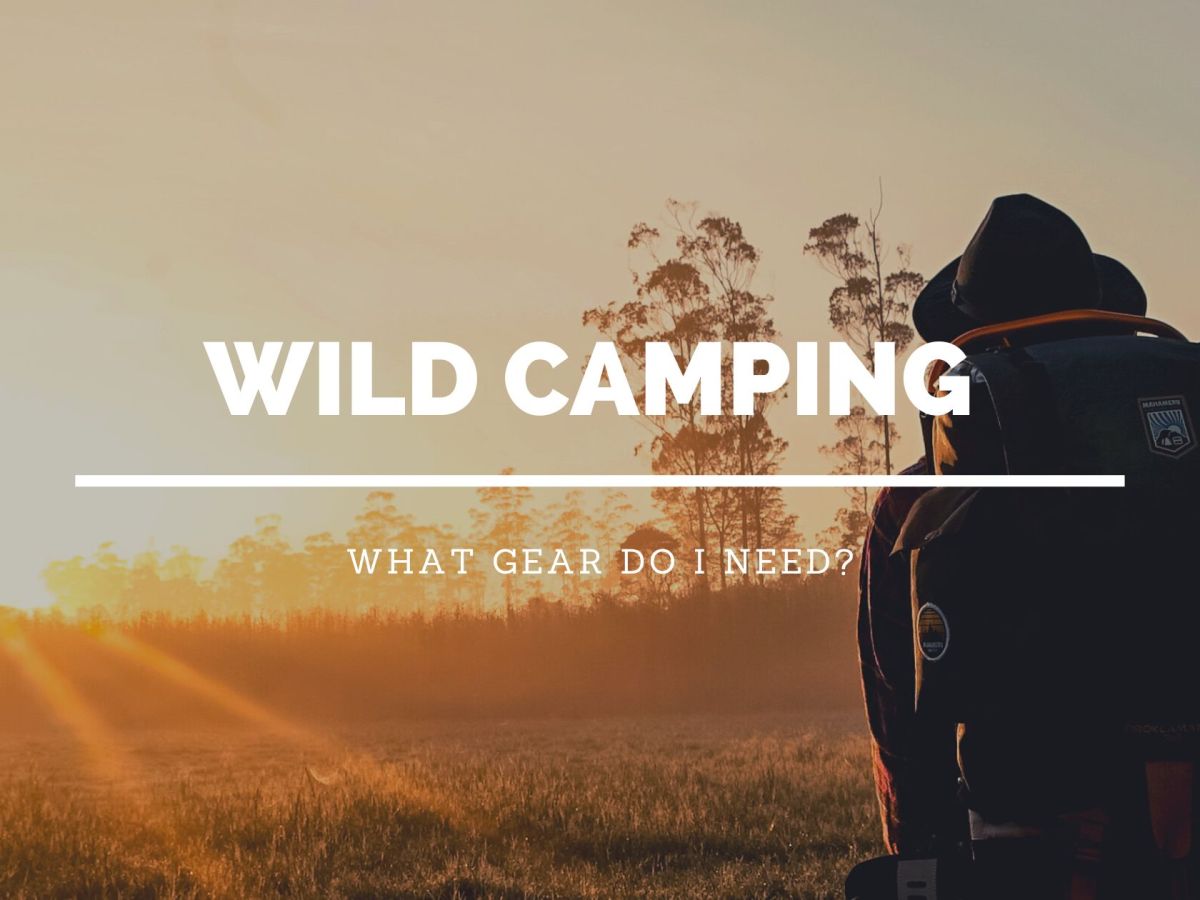


Leave a comment